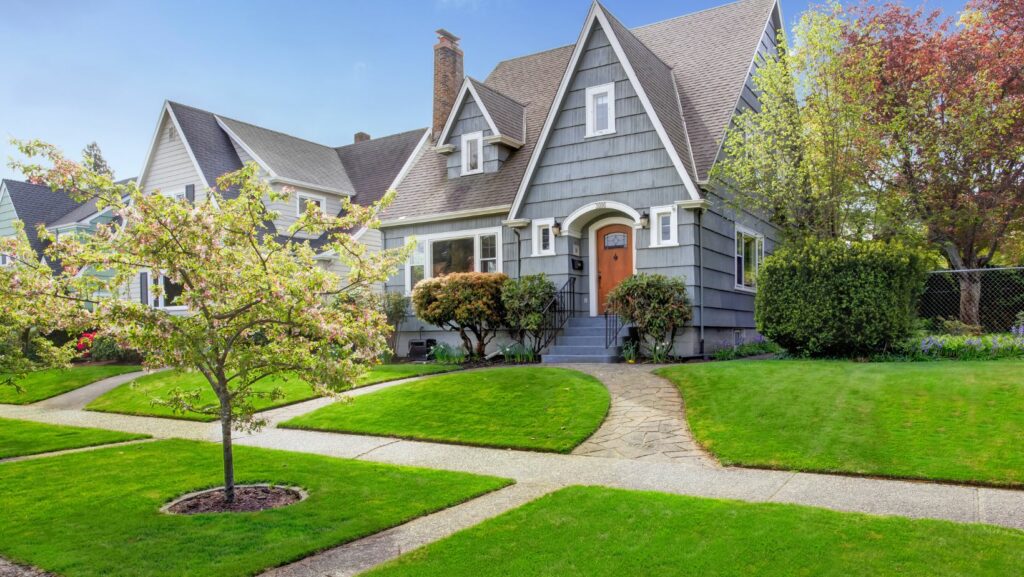Every home tells a story. From towering Victorian mansions to cozy Craftsman bungalows, the architecture of a house can reveal a lot about its history, the era it was built in, and the people who once lived there. This article will delve into the fascinating world of home architectural styles, providing a glimpse into the distinct characteristics that make each style unique. So let’s embark on this architectural journey, discovering the beauty and diversity that exists within the realm of home design.
Different Home Architectural Styles
 Deepening understanding of historic architectural styles, it becomes clear that home architecture isn’t just about bricks and mortar. It’s a living, breathing reflection of societal norms, shifts, and advancements. The evolution of home styles, for instance, mirrors changes in society’s tastes over the centuries— take a look at Victorian Gothic, Colonial Revival, Arts and Crafts, and Mid-Century Modern, four distinctly different styles shaped by their specific eras.
Deepening understanding of historic architectural styles, it becomes clear that home architecture isn’t just about bricks and mortar. It’s a living, breathing reflection of societal norms, shifts, and advancements. The evolution of home styles, for instance, mirrors changes in society’s tastes over the centuries— take a look at Victorian Gothic, Colonial Revival, Arts and Crafts, and Mid-Century Modern, four distinctly different styles shaped by their specific eras.
Victorian Gothic, popular in the late 19th century, features ornate, romantic designs often in wood. Colonial Revival, a style revisited during the late 19th and early 20th centuries, showcases symmetry and simplicity, with classic Greek and Roman influences. Arts and Crafts or Craftsman, blooming in the early 20th century, champions handiwork and material authenticity. Mid-Century Modern, a style emerging post World War II, emphasizes function, with minimal ornamentation and a bold departure from traditional styles.
Each style, shaped by its historic context, contributes to the rich architectural landscape we see today. This diversity is a testament to the ever-evolving field of architecture, which continues to fascinate and inspire.
Characteristics of Popular Home Architectural Styles
 Following the profound journey through history and societal evolution, let’s delve into the unique characteristics that define each popular home architectural style.
Following the profound journey through history and societal evolution, let’s delve into the unique characteristics that define each popular home architectural style.
Mastery in the Victorian Gothic style features ornate details, complex shapes, and towering structures. Notable in this style are pointed arches, sturdy buttresses, distinctive window tracery, and intricate carvings.
Representing an era of simplicity and symmetry, the Colonial Revival style presents a balanced facade, rectangular shapes, multi-pane windows, and pillared entrances. The interior often displays a central hallway flanked by rooms on each side.
Celebrating craftsmanship and simplicity, the Arts and Crafts style offers handcrafted wood, glass, and metal work. Key elements include low-pitched gable roofs, exposed beams, open floor plans, and built-in furniture.
Embarking on a revolution in design, Mid-Century Modern style integrates nature with architecture, offering large windows, open spaces, and minimalist concepts. This style often includes flat planes, changes in elevation, and integration with the surrounding landscape.
Architectural Styles Around the World
 Delving deeper into the international panorama, four popular architectural styles are the Tuscan, Scandinavian Minimalist, Japanese, and Bauhaus. Originating in the Italian region of Tuscany, Tuscan houses frequently feature earthy colors, rough hewn stone facades, wooden beams, and terracotta tiles. Scandinavian Minimalist, by contrast, manifests in simplicity, functionality, and the use of natural materials, for instance, abundant wood and neutrals with pops of primary-color decor, reflecting the balance of comfort and modesty inherent in Nordic cultures. A step into the East, the traditional Japanese style homes prioritize nature and spatial awareness, demonstrated in fusuma sliding doors, tatami mat floors, and an indoor/outdoor flow.
Delving deeper into the international panorama, four popular architectural styles are the Tuscan, Scandinavian Minimalist, Japanese, and Bauhaus. Originating in the Italian region of Tuscany, Tuscan houses frequently feature earthy colors, rough hewn stone facades, wooden beams, and terracotta tiles. Scandinavian Minimalist, by contrast, manifests in simplicity, functionality, and the use of natural materials, for instance, abundant wood and neutrals with pops of primary-color decor, reflecting the balance of comfort and modesty inherent in Nordic cultures. A step into the East, the traditional Japanese style homes prioritize nature and spatial awareness, demonstrated in fusuma sliding doors, tatami mat floors, and an indoor/outdoor flow.
Choosing the Right Architectural Style for Your Home
Choosing the right architectural style for your home isn’t just about aesthetics. It’s a journey into the heart of history, culture, and personal preference. With styles ranging from Victorian Gothic to Mid-Century Modern, each home architecture has a story to tell. It’s a reflection of the era it was born in and the societal changes that shaped it.
So, when you’re deciding on a home architectural style, remember it’s more than just a design choice. It’s about embracing a piece of history, a culture, and a way of life. Your home, after all, is an extension of who you are. Your choice of architectural style should reflect that.

